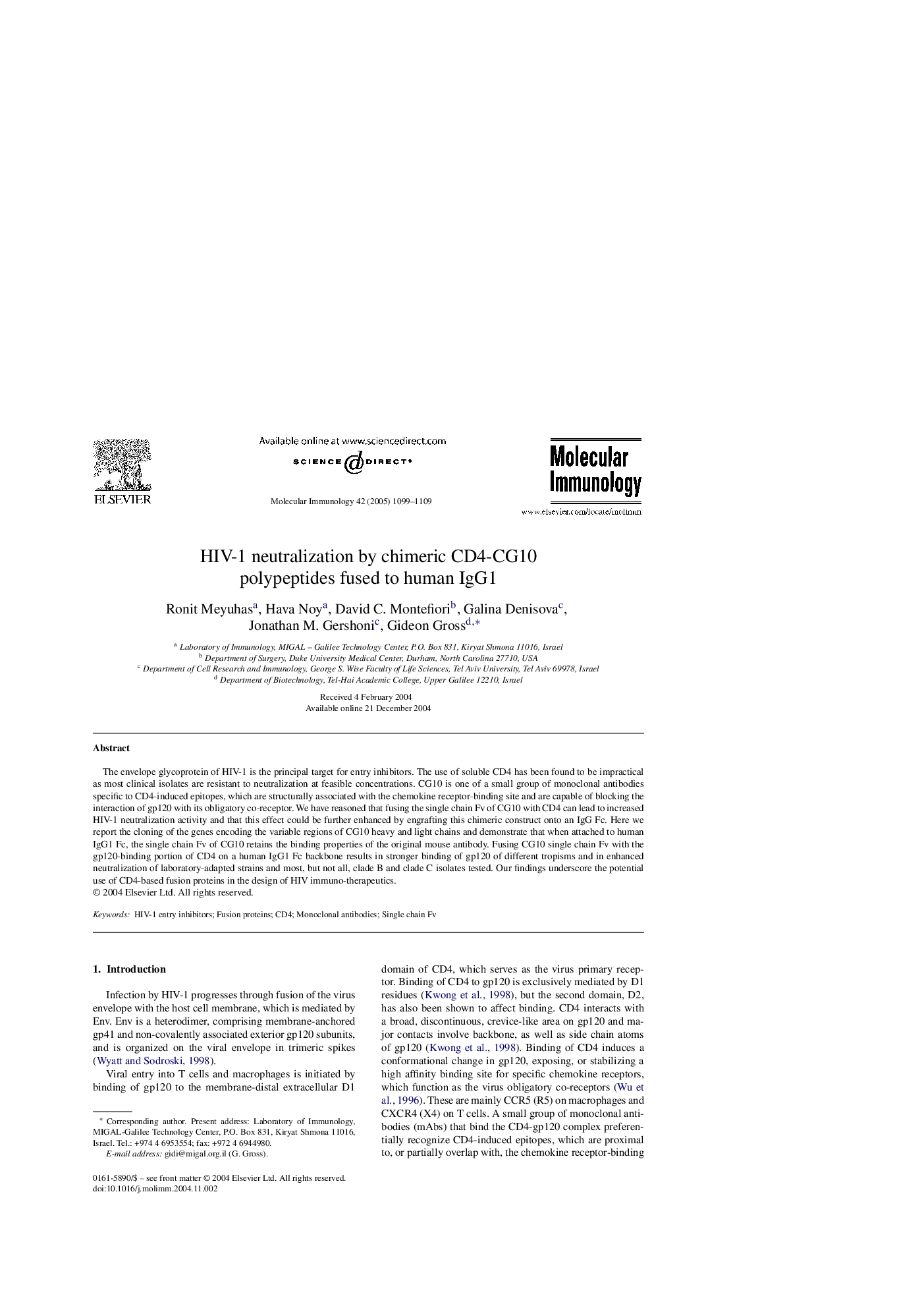| Article ID | Journal | Published Year | Pages | File Type |
|---|---|---|---|---|
| 9141822 | Molecular Immunology | 2005 | 11 Pages |
Abstract
The envelope glycoprotein of HIV-1 is the principal target for entry inhibitors. The use of soluble CD4 has been found to be impractical as most clinical isolates are resistant to neutralization at feasible concentrations. CG10 is one of a small group of monoclonal antibodies specific to CD4-induced epitopes, which are structurally associated with the chemokine receptor-binding site and are capable of blocking the interaction of gp120 with its obligatory co-receptor. We have reasoned that fusing the single chain Fv of CG10 with CD4 can lead to increased HIV-1 neutralization activity and that this effect could be further enhanced by engrafting this chimeric construct onto an IgG Fc. Here we report the cloning of the genes encoding the variable regions of CG10 heavy and light chains and demonstrate that when attached to human IgG1 Fc, the single chain Fv of CG10 retains the binding properties of the original mouse antibody. Fusing CG10 single chain Fv with the gp120-binding portion of CD4 on a human IgG1 Fc backbone results in stronger binding of gp120 of different tropisms and in enhanced neutralization of laboratory-adapted strains and most, but not all, clade B and clade C isolates tested. Our findings underscore the potential use of CD4-based fusion proteins in the design of HIV immuno-therapeutics.
Related Topics
Life Sciences
Biochemistry, Genetics and Molecular Biology
Molecular Biology
Authors
Ronit Meyuhas, Hava Noy, David C. Montefiori, Galina Denisova, Jonathan M. Gershoni, Gideon Gross,
